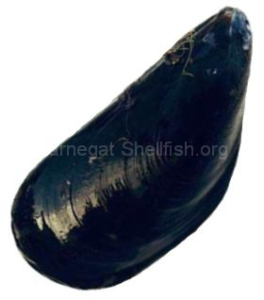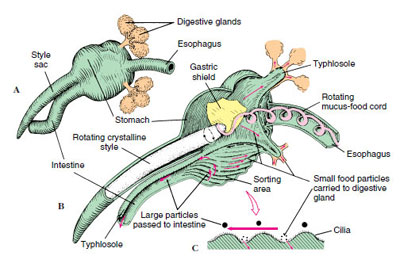
Mussels
Mussel Anatomy Family Mytilidae
 Mussels are bivalves and like clams and oysters, their shell consist of two hinged halves or valves.
Mussels are bivalves and like clams and oysters, their shell consist of two hinged halves or valves.
The shell outline is elongated and asymmetrical compared with other edible clams, which are often more or less rounded or oval.
Mussels live Barnegat Bay and offshore in the intertidal zone and in deeper ocean waters.
 The mussel’s external shell is composed of two hinged halves or “valves”. The valves are joined together on the outside by a ligament, and are closed by strong internal muscles (anterior and posterior adductor muscles).
The mussel’s external shell is composed of two hinged halves or “valves”. The valves are joined together on the outside by a ligament, and are closed by strong internal muscles (anterior and posterior adductor muscles).
Mussel shells carry out a variety of functions, including support for soft tissues, protection from predators and protection against desiccation (the state of extreme dryness).
 The shell has three layers:
The shell has three layers:
The nacreous layer (nacre or mother-of-pearl) is composed of calcium carbonate, which is secreted by the mantle.
Prismatic layer is the middle layer of chalky white crystals of calcium carbonate.
The periostracum layer is the outer layer, a thein organic coating resembling a skin.
Its function is to protect the prismatic layer from abrasion and dissolution by acids.
In-between the Valves (what the shell protects)
Digestion
Bivalves intake small food particles from their gills. Extracellular digestion happens in the stomach. Then, the intracellular particles move to the diverticula where the food is further digested. the excess particles are then passed through the excretory system.
Blue mussel Mytilus edulis



